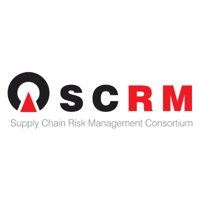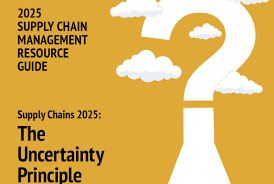Analyst Insight: Supply chain executives are developing their 2025 strategies to contend with...
A Five-Stage Maturity Model for Supply Chain Resilience
The COVID-19 pandemic has produced and will continue to produce artificial demand and supply shocks, and it will take time to rebalance the equilibrium. All sectors will experience a “bullwhip effect'' — an imbalance between demand and supply — through a good portion of 2022, according to The Supply Chain Risk Management Consortium, a body of 30 companies devoted to risk and resilience education.
The group advocates a five-stage maturity model to manage supply chain risk and build resilience in an era of volatility, uncertainty, complexity and ambiguity.
Stage 1: Foundational. This stage involves companies with little or no awareness of risk management or formal education on the tools, techniques and solutions that are available today. Companies should develop supply chain processes with risk and resilience best practices.
Stage 2: Visibility. Visibility and awareness of risk across the supply chain is an important step. Here, transparency is generated across the supply chain — both upstream to suppliers and downstream to customers. The ability to become aware and respond faster than competitors to risk events is a critical success factor.
Stage 3: Predictability. This provides capabilities to test supply chains in terms of “what-if” scenario planning. Network modeling and mapping tools provide a view into how supply chains might react to risk events. This insight helps companies create risk response plans.
Exemplar companies proactively identify risks through alerts, assess them using digital twin models, mitigate them and even turn risks into opportunities.
Stage 4: Resiliency. Risk management leaders now embed their tools, techniques and key risk indicators into daily supply chain decision making processes. These frameworks, protocols, metrics and organizational structures provide a foundation for operational excellence in risk management and building a resilient enterprise.
Stage 5: Sustainability. Companies build upon their organizational infrastructures through corporate frameworks such as enterprise risk management (ERM), governance, risk and compliance (GRC), and process standardization. Leaders continually assess their risk profile and leverage their knowledge database to sustain and improve processes.
Like any major corporate process, supply chain risk and resilience management requires continuous attention and improvement. Leaders who are ahead in this maturity model will fare much better than their competitors in 2022 and beyond.
Gregory L. Schlegel is founder of The Supply Chain Risk Management Consortium and former executive in residence, Supply Chain Risk Management at Lehigh University.


